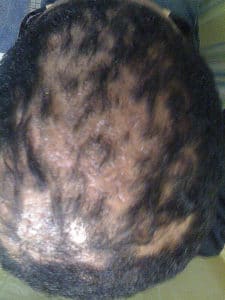Dr. Dina Strachan is a dermatologist specializing in hair loss in New York City. As an expert in hair loss dermatology in a diverse, global city, she is experienced in treating many types of alopecia. In this article she discusses why hair dermatologists sometimes suggest a scalp biopsy for hair loss.

“Why is my hair falling out?”
When people go to hair loss dermatologists, the doctors use a systematic approach. Hair loss, or alopecia, has a number of causes. The reason may have to do with genetics, ethnic background, gender, diet, lifestyle, grooming practices, underlying health problems, local scalp problems and more. Some types of hair loss are reversible. Some types are not. Hair loss can be the first presentation of other serious medical problems such as lupus or syphilis. How one treats hair loss depends on why one has it. It is for this reason that it is important to correctly diagnose what kind of hair loss someone has before one embarks on a treatment plan. The goal is to help the patient to both prevent hair loss as well as regrow hair. Again, one must start with the cause.
Related: Got hair loss? Get a proper diagnosis
How to diagnose hair loss
Diagnosis of hair loss means we determine the cause or nature of the problem. The process involves a combinations of taking patient history, doing a physical examination, blood work, culture, and/or punch biopsy. Sometimes a hair loss expert, such as a dermatologist can determine exactly what kind of hair loss a person has with a history and physical examination alone. Conditions such as androgenetic alopecia or alopecia areata can have a classic presentation that a trained expert can see. When the hair loss specialist suspects a condition such as telogen effluvium, however, they may order blood work. If there is suspicion of a fungal infection such as tinea capitis, then a hair expert will send a culture.
In some cases, however, the doctor wants information that requires the help of a pathologist. Getting a scalp biopsy is particularly helpful when trying to diagnosis scarring alopecia, which is permanent hair loss. Sometimes, even for an expert, it is challenging to know which of several conditions is causing scarring alopecia just by looking at it. This is when the hair loss expert may suggest doing a punch biopsy of the scalp.
Related: Alma TED hair restoration
What happens during a punch biopsy of the scalp?
By taking a pencil-eraser sized piece of skin from the affected area of the scalp, and sending it to an experienced dermatopathologist who looks at it under the microscope, the doctor can sometimes obtain a more accurate diagnosis.
The procedure takes place the office. The doctor cleans the area with alcohol and injects anesthesia to numb to scalp. A tiny, cookie-cutter shaped scalp allows the doctor to remove a small plug of skin which gets sent to the lab in formaldehyde. Typically a punch scalp biopsy requires 1-2 stitches, however, sometimes the small wound is allowed to heal without closure. The procedure usually takes just a few minutes. The patient would keep the area dry for the first 24 hours, then clean it twice daily with soap and water. Applying petroleum jelly after cleaning prevents scab formation with better closure of the wound. Removal of stitches happens 5-7 days after the procedure.
Watch Dr. Strachan’s interview with CBS New York on alopecia!
Related: Hair loss dermatologist
Learn more about our services: scalp specialist


